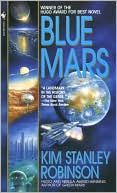Category Books
- Fiction Books & Literature
- Graphic Novels
- Horror
- Mystery & Crime
- Poetry
- Romance Books
- Science Fiction & Fantasy
- Thrillers
- Westerns
- Ages 0-2
- Ages 3-5
- Ages 6-8
- Ages 9-12
- Teens
- Children's Books
- African Americans
- Antiques & Collectibles
- Art, Architecture & Photography
- Bibles & Bible Studies
- Biography
- Business Books
- Christianity
- Computer Books & Technology Books
- Cookbooks, Food & Wine
- Crafts & Hobbies Books
- Education & Teaching
- Engineering
- Entertainment
- Foreign Languages
- Game Books
- Gay & Lesbian
- Health Books, Diet & Fitness Books
- History
- Home & Garden
- Humor Books
- Judaism & Judaica
- Law
- Medical Books
- New Age & Spirituality
- Nonfiction
- Parenting & Family
- Pets
- Philosophy
- Political Books & Current Events Books
- Psychology & Psychotherapy
- Reference
- Religion Books
- Science & Nature
- Self Improvement
- Sex & Relationships
- Social Sciences
- Sports & Adventure
- Study Guides & Test Prep
- Travel
- True Crime
- Weddings
- Women's Studies
Blue Mars »

Authors: Kim Stanley Robinson
ISBN-13: 9780553573350, ISBN-10: 0553573357
Format: Mass Market Paperback
Publisher: Random House Publishing Group
Date Published: June 1997
Edition: (Non-applicable)
Author Biography: Kim Stanley Robinson
Kim Stanley Robinson is a winner of the Hugo, Nebula, and Locus Awards. He is the author of eleven previous books, including the bestselling Mars trilogy and the critically acclaimed Fifty Degrees Below, Forty Signs of Rain, The Years of Rice and Salt, and Antarctica–for which he was sent to the Antarctic by the U.S. National Science Foundation as part of their Antarctic Artists and Writers’ Program. He lives in Davis, California
Book Synopsis
The red planet is red no longer, as Mars has become a perfectly inhabitable world. But while Mars flourishes, Earth is threatened by overpopulation and ecological disaster. Soon people look to Mars as a refuge, initiating a possible interplanetary conflict, as well as political strife between the Reds, who wish to preserve the planet in its desert state, and the Green "terraformers". The ultimate fate of Earth, as well as the possibility of new explorations into the solar system, stand in the balance.
Publishers Weekly
Red Mars, the kickoff to Robinson's epic Mars trilogy, won the Nebula for best SF novel of 1992; its follow-up, Green Mars, won the parallel Hugo for 1994. The conclusion to the saga is not unlike the terrain of Robinson's Red Planet: fertile and fully developed in some spots, vast and arid in othersbut, ultimately, it's an impressive achievement. Using the last 200 years of American history as his template for Martian history, Robinson projects his tale of Mars's colonization from the 21st century, in which settlers successfully revolt against Earth, into the next century, when various interests on Mars work out their differences on issues ranging from government to the terraforming of the planet and immigration. Sax Russell, Maya Toitovna and others reprise their roles from the first two novels, but the dominant "personality" is the planet itself, which Robinson describes in exhaustive naturalistic detail. Characters look repeatedly for sermons in its stones and are nearly overwhelmed by textbook abstracts on the biological and geological minutiae of their environment. Not until the closing chapters, when they begin confronting their mortality, does the human dimension of the story balance out its awesome ecological extrapolations. Robinson's achievement here is on a par with Bradbury's The Martian Chronicles and Herbert's Dune, even if his clinical detachment may leave some readers wondering whether there really is life on Mars. Author tour. (June)
Table of Contents
Subjects
 Fiction Subjects
Fiction Subjects  Occupations - Fiction
Occupations - FictionFiction Books & Literature
 Fiction Subjects
Fiction Subjects  Politics & Social Issues - Fiction
Politics & Social Issues - FictionFiction Books & Literature
 Fiction Subjects
Fiction Subjects  Science & Technology - Fiction
Science & Technology - FictionFiction Books & Literature
 Teen Fiction
Teen Fiction  Teen Fiction - Science Fiction
Teen Fiction - Science FictionScience Fiction & Fantasy
 High-Tech & Hard Science Fiction
High-Tech & Hard Science Fiction  Science Fiction - Ecological
Science Fiction - EcologicalScience Fiction & Fantasy
 High-Tech & Hard Science Fiction
High-Tech & Hard Science Fiction  Science Fiction - High Tech
Science Fiction - High TechScience Fiction & Fantasy
 Social Science Fiction
Social Science Fiction  Science Fiction - Ecological
Science Fiction - EcologicalScience Fiction & Fantasy
 Social Science Fiction
Social Science Fiction  Science Fiction - Societies & Cultures
Science Fiction - Societies & CulturesScience Fiction & Fantasy
 Space Exploration & Discovery
Space Exploration & Discovery  Science Fiction - Explorers & Frontier Worlds
Science Fiction - Explorers & Frontier WorldsTeens
 More Teen Fiction
More Teen Fiction  Teen Fiction - Science Fiction
Teen Fiction - Science FictionFiction Books & Literature
 Science Fiction & Fantasy
Science Fiction & Fantasy  High-Tech & Hard Science Fiction
High-Tech & Hard Science FictionFiction Books & Literature
 Science Fiction & Fantasy
Science Fiction & Fantasy  Social Science Fiction
Social Science FictionFiction Books & Literature
 Science Fiction & Fantasy
Science Fiction & Fantasy  Space Exploration & Discovery
Space Exploration & Discovery
